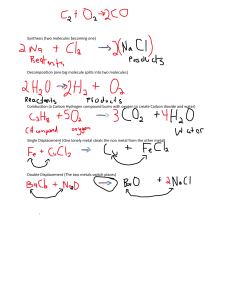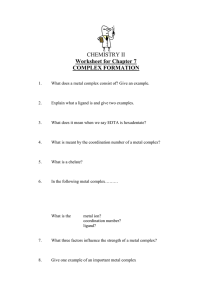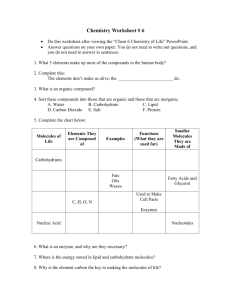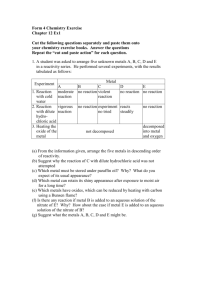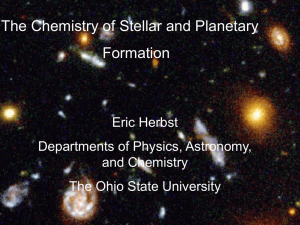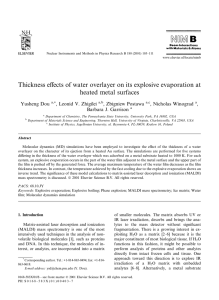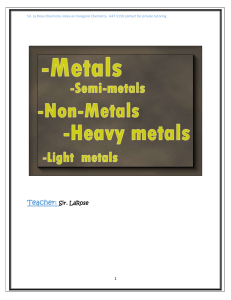Incorporating theoretical inorganic chemistry into mechanistic descriptions of small molecule-metal interactions
advertisement
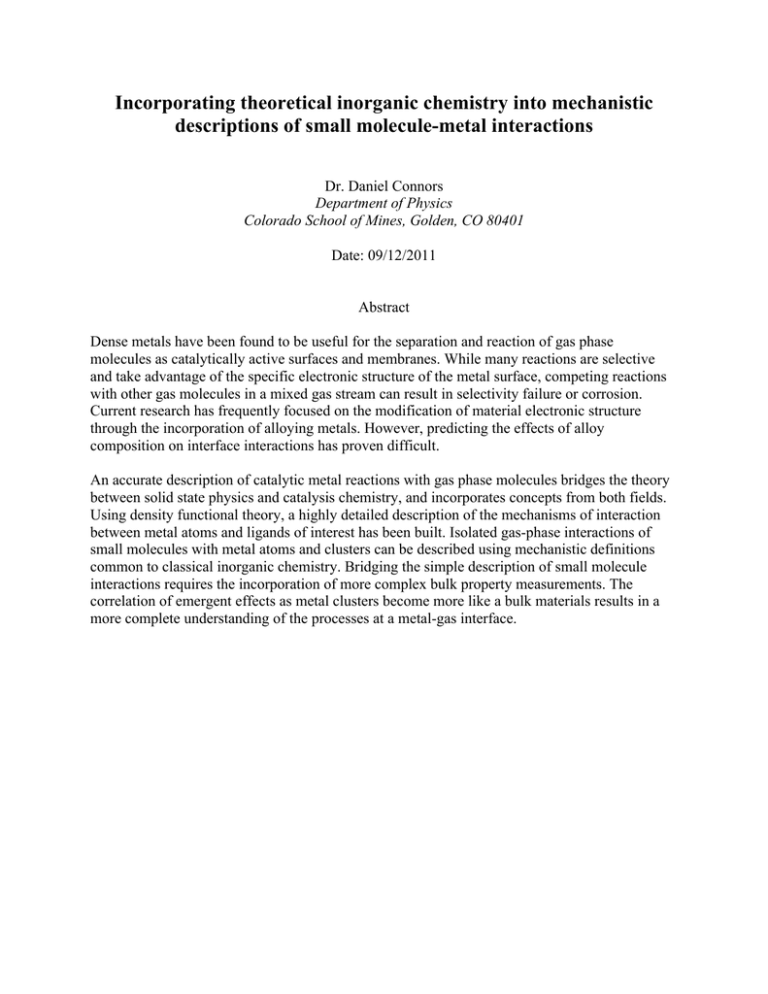
Incorporating theoretical inorganic chemistry into mechanistic descriptions of small molecule-metal interactions Dr. Daniel Connors Department of Physics Colorado School of Mines, Golden, CO 80401 Date: 09/12/2011 Abstract Dense metals have been found to be useful for the separation and reaction of gas phase molecules as catalytically active surfaces and membranes. While many reactions are selective and take advantage of the specific electronic structure of the metal surface, competing reactions with other gas molecules in a mixed gas stream can result in selectivity failure or corrosion. Current research has frequently focused on the modification of material electronic structure through the incorporation of alloying metals. However, predicting the effects of alloy composition on interface interactions has proven difficult. An accurate description of catalytic metal reactions with gas phase molecules bridges the theory between solid state physics and catalysis chemistry, and incorporates concepts from both fields. Using density functional theory, a highly detailed description of the mechanisms of interaction between metal atoms and ligands of interest has been built. Isolated gas-phase interactions of small molecules with metal atoms and clusters can be described using mechanistic definitions common to classical inorganic chemistry. Bridging the simple description of small molecule interactions requires the incorporation of more complex bulk property measurements. The correlation of emergent effects as metal clusters become more like a bulk materials results in a more complete understanding of the processes at a metal-gas interface.
